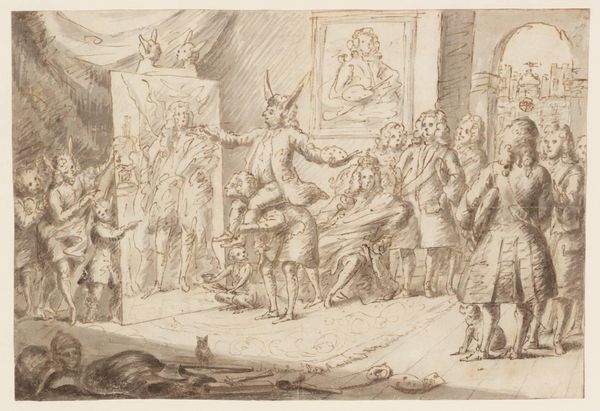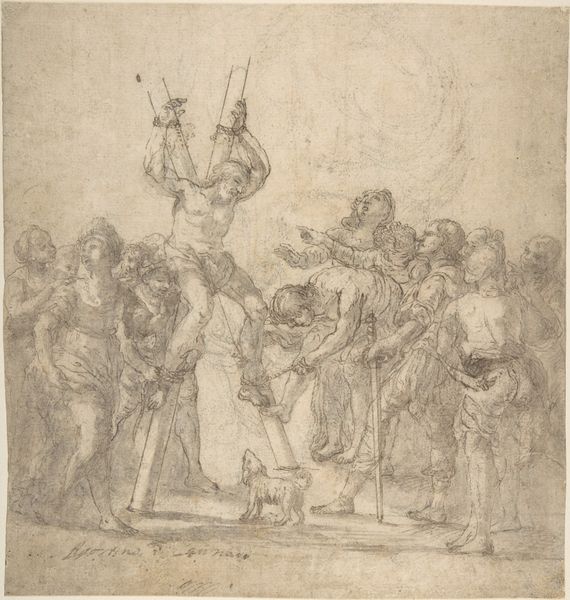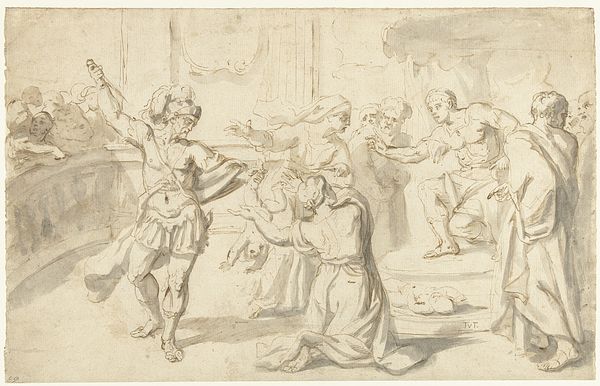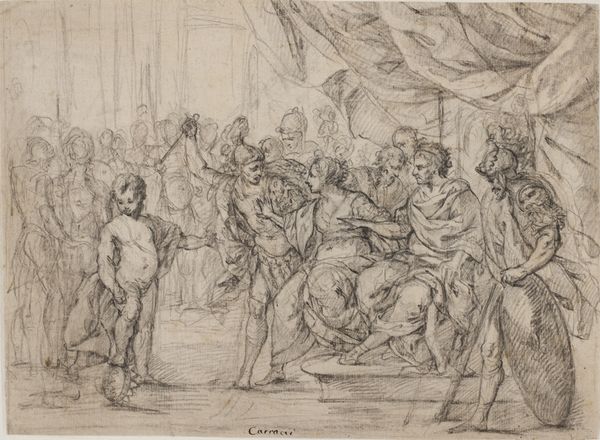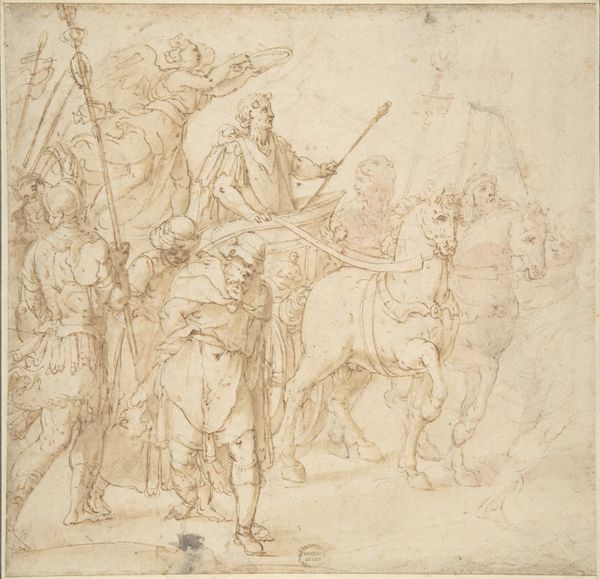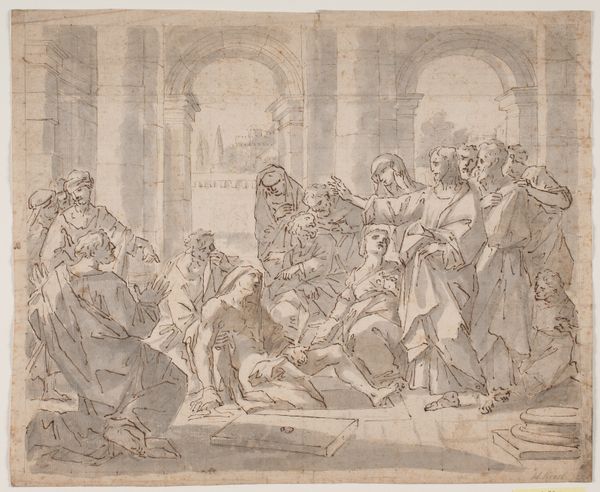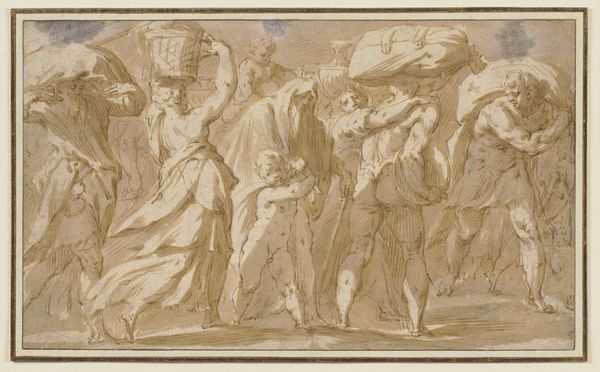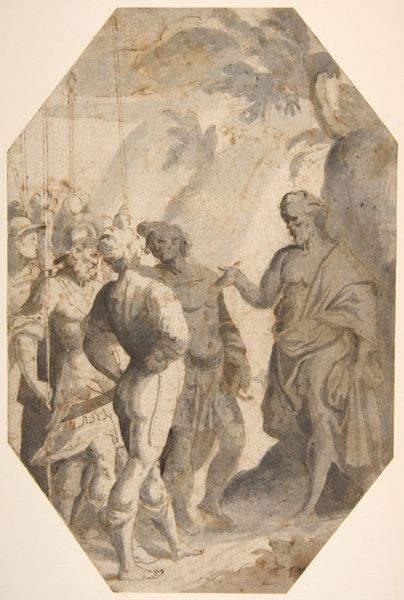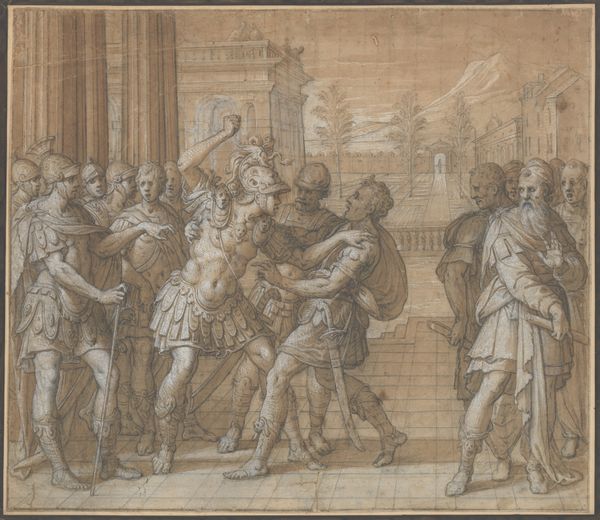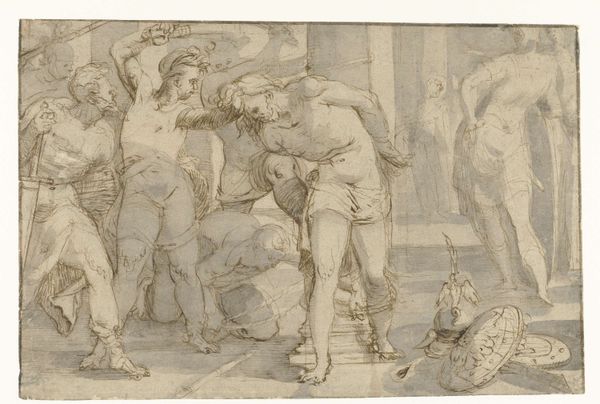
drawing, ink
#
drawing
#
narrative-art
#
baroque
#
figuration
#
ink
#
history-painting
Copyright: Public Domain
Curator: Standing before us is "Das Schießen auf den toten Vater," or "The Shooting of the Dead Father," a compelling ink drawing traced to around 1600, crafted by Raffaello dal Colle. It resides here at the Städel Museum. Editor: The somber hues immediately strike me, this delicate scene despite depicting violence and almost unbearable tension. The figures, sketched with such fluid lines, seem caught between defiance and resignation. Curator: This work exemplifies narrative art characteristic of the late Mannerist and early Baroque periods, demonstrating Dal Colle’s mastery in composing complex figural arrangements. Think of the socio-political dynamics of the time and how art served as a reflection and commentary. Editor: Exactly. What strikes me is the central theme of familial betrayal intertwined with public spectacle. I consider how the artist engages with issues of justice and power and how such visual vocabularies served dominant ideologies or potentially offered subversions. Curator: It’s fascinating how the composition reinforces power structures: the ruler seated on the left, surrounded by his guard, directing the ghastly proceedings. The staged spectacle carries implications of a theatre, doesn't it? It’s quite theatrical and dramatic, not atypical of art commissioned in that period. Editor: I perceive a certain vulnerability, in the figure forced to perform this act. Who were the powerless under constant threats of authority back then? Curator: Absolutely, and beyond the political aspect, we can delve into psychoanalytic interpretations. The act of shooting a dead father figure has significant symbolic weight connected to rebellion, authority, and repressed desire. Editor: Well, that really gets to the essence of visual artwork doesn’t it? It provides more than visual interpretation of history, but questions, dialogues that allow art historians like yourself, or political voices to deconstruct established thoughts. Curator: Looking at Dal Colle's drawing gives an exceptional opportunity to interpret societal beliefs about leadership, and also questions how cultural anxieties emerge within certain artworks of a period. Editor: Indeed, it's precisely this interplay between historical narrative, artistic execution, and symbolic weight that makes this piece profoundly resonate. Curator: A tragic display of familial ruin displayed for generations to ponder, that still demands attention and reinterpretation in our present world. Editor: It reminds us of our roles, as audience members looking into a staged scene and as witnesses implicated into past political affairs.
Comments
No comments
Be the first to comment and join the conversation on the ultimate creative platform.


